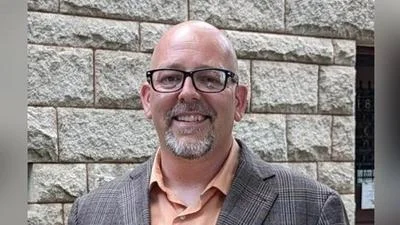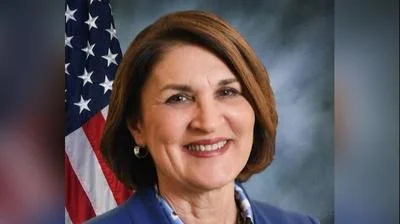State bureaucrats will dictate how many teachers Illinois school districts must hire and how much to pay them if a school funding bill is signed into law this month.
Staffing and pay requirements are among the dozens of new state mandates that are part of the 500-page bill, few details of which have been publicized.
Gov. Bruce Rauner has promised a veto of Senate Bill 1, which would also redistribute state tax dollars from hundreds of suburban districts to the insolvent Chicago Public Schools (CPS), $17 billion in debt and reeling from a corruption scandal that recently sent its CEO to federal prison.

Teacher's union activist Ralph Martire helped author a bill that would require more hiring of teachers at public schools in Illinois.
| CTBA
The bill’s many mandates have drawn less attention. But they portend to change the governance and day-to-day management of Illinois’ public schools, minimizing the autonomy of principals and the decision-making authority of locally-elected school boards.
Both will effectively be told where they can spend money and on what.
Illinois school districts will receive new state guidelines dictating everything how many music and art teachers to hire to how much to spend on technology for students and how much substitute teachers should make.
State mandated employee-to-student ratios will cover all aspects of a school’s operations, mandating minimum hiring requirements for principals and their assistants, teachers and various support staff.
State money for schools would no longer be allocated per-student, but rather in exchange for meeting state statutory school district employment and spending requirements.
Follow the state’s spending rules. Or else.
Failure to follow the new rules would result in a school district being denied school state funding.
That state money “shall be” distributed only for spending on fulfilling state mandates is explicitly laid out in the text of SB1. More vague is how the state plans to enforce that its dictates are being precisely followed.
Perhaps by design, the bill doesn’t specifically define how school district spending will be monitored, or how districts will be penalized for failing to follow the new state rules. But the bill’s authors and biggest supporters have not been shy about their intentions, which they expect to be fulfilled by Illinois State Board of Education (ISBE) staff administratively.
“Increasing school funding will not result in improved outcomes for students unless a district and school strategically plan for use of those funds.. then execute all aspects of their educational plan with fidelity,” according to the Illinois School Funding Commission’s final report to Rauner and the General Assembly, produced by SB1 backers in February. “In exchange for local control, districts must be transparent in how funds are being spent.”
“A mechanism will be included in the law to require ISBE to investigate any district that is receiving increased investment with no improvement or a decline in outcomes,” the report says.”Depending on the results of the inquiry, the State Board may intervene and support the district.”
From per-pupil, to per-teacher spending
The new state school spending mandates are presented by supporters as "best practices" school districts should follow to get the best student results.
But they don’t address educational practices, like teaching methodologies and styles or recommended curriculum. Rather, the mandates only establish minimum employment and pay levels for all Illinois public schools, dictating who school districts can hire and how much they need to pay them.
And their recommendations aren’t limited to teachers.
Mandated staff-to-student ratios cover all range of school employees, including principals, tutors, school nurses, “supervisory aides,” counselors, librarians and even janitors, described as “school site staff” in the bill.
Schools cannot have more than 20 students for each teacher in grades Kindergarten through three, the law says. And they require a teacher for every 25 students in for grades 4-12.
For students declared “low-income,” more teachers are required, per the law. Schools would need student-teacher ratios of one to 15 in elementary school and one to 20 in middle and high school.
$285.50 on “computer technology”
SB1 recommends how a school will spend its money — down to the cent.
According to the law, schools will now spend $40 per student on gifted programs, $190 per student on instructional materials, $25 per student on testing and $285.50 on “computer technology and equipment.”
The mandates don’t just cover academics.
Schools will receive $1,038 per student for “maintenance and operations” and $742 for “central office investments,” including regional administrators.
Student activities are now required. Schools must spend $100 per student on activities in elementary school, $200 per student in middle school, and $675 per student in grades 9-12, the equivalent of $1.3 million for a 2,000 student high school.
“Professional development” for teachers is also essential and mandated at $125 per student, including that which addresses teacher problems with “inclusivity, cultural sensitivity, or implicit bias,” like the “white privilege” training New Trier High School District 203 is currently providing to staff.






 Alerts Sign-up
Alerts Sign-up